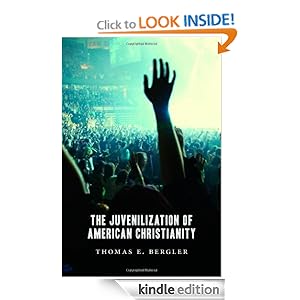A. Land of the Great Eagle...
The United
States is not composed with a single race.
It is a nation composed with many peoples, a “melting pot.”
Today this
country is at the geographic center, the crossroads, of the whole earth, and is
like a giant eagle with the two biggest oceans as its two wings.
We all have to
give thanks to the Lord that we are in the United States, in the center of the
inhabited earth for the perfection of the new man that God intends to have in
His economy...more (The One New Man , chapter 3, Section 2)
 B. Trends in US demography
B. Trends in US demography
Demographics of the United States
The American population reached the 200 million mark in 1967, and the 300
million mark on October 17, 2006.Currently, population growth is fastest among minorities as a whole. Hispanic and Latino Americans accounted for almost half (1.4 million) of the national population growth of 2.9 million between July 1, 2005, and July 1, 2006. Immigrants and their U.S.-born descendants are expected to provide most of the U.S. population gains in the decades ahead...(more)
 Explaining Why Minority Births Now Outnumber White Births
Explaining Why Minority Births Now Outnumber White Births
Minorities—defined as anyone who is not a single-race non-Hispanic
white—made up 50.4% of the nation’s population younger than age 1 on
July 1, 2011. Part of the explanation for changing birth patterns is that minority
populations are younger than whites, so are more likely to be having and
raising children. ...(more)

Fueled by immigration, Asians are fastest-growing U.S. group
The reason many Asians move to the U.S. include shifts in U.S. immigration
policies, changes in their home countries and U.S. labor needs for
science, engineering and math graduates. Chinese Americans are the largest Asian immigrant group, with more than 4
million who identified as Chinese, followed by Filipinos, Indians,
Vietnamese, Korean and Japanese...(more)
 C. Trends of Faith
C. Trends of Faith
by Races
Major Faith Shifts Evident Among Whites, Blacks, and Hispanics Since 1991
White adults are six percentage points less likely to have an orthodox view of God today than was the case in 1991. Orthodox views of God are far less common among Hispanics today. In
1991, almost nine out of ten (88%) held such an outlook. Now, barely six
out of ten do so (62%). Twenty years ago nearly nine out of ten black adults (88%) held an
orthodox perspective on the nature of God. Today the figure is eleven
percentage points lower (77%). ...(more)

African-Americans Markedly More Religious Than U.S. Population as a Whole
More than half of African-Americans (53%) report attending religious
services at least once a week, more than three-in-four (76%) say they
pray on at least a daily basis and nearly nine-in-ten (88%) indicate
they are absolutely certain that God exists. On each of these measures,
African-Americans stand out as the most religiously committed racial or
ethnic group in the nation....(more)
Changing Faiths: Latinos and the Transformation of American
Religion
 The growth of the Hispanic population is leading to the emergence of Latino-oriented churches across the country. About a third of all Catholics in the U.S. are now Latinos, and the
study projects that the Latino share will continue climbing for decades.This demographic reality, combined with the distinctive characteristics
of Latino Catholicism, ensures that Latinos will bring about important
changes in the nation's largest religious institution....(more)
The growth of the Hispanic population is leading to the emergence of Latino-oriented churches across the country. About a third of all Catholics in the U.S. are now Latinos, and the
study projects that the Latino share will continue climbing for decades.This demographic reality, combined with the distinctive characteristics
of Latino Catholicism, ensures that Latinos will bring about important
changes in the nation's largest religious institution....(more)
D. Trends of Faith by age group
Children:
New Research Explores the Long-Term Effect of Spiritual Activity among Children and Teens
 When it comes to church engagement, those who attended Sunday school or
other religious programs as children or as teens were much more likely
than those without such experiences to attend church and to have an
active faith as adults...(more)
When it comes to church engagement, those who attended Sunday school or
other religious programs as children or as teens were much more likely
than those without such experiences to attend church and to have an
active faith as adults...(more)
Teenagers:
How Teenagers’ Faith Practices are Changing
 “While there is still much vibrancy to teen spirituality, it seems to
be ‘thinning out.’ Teenagers view religious involvement partly as a way
to maintain their all-important relationships. Yet perhaps technology
such as social networking is reconfiguring teens’ needs for
relationships and continual connectivity, diminishing the role of
certain spiritual forms of engagement in their lives. Talking to God may
be losing out to Facebook.”...(more)
“While there is still much vibrancy to teen spirituality, it seems to
be ‘thinning out.’ Teenagers view religious involvement partly as a way
to maintain their all-important relationships. Yet perhaps technology
such as social networking is reconfiguring teens’ needs for
relationships and continual connectivity, diminishing the role of
certain spiritual forms of engagement in their lives. Talking to God may
be losing out to Facebook.”...(more)
 College age:
College age:
Millennial Values Survey Report
College Millennials (age 18-24) are considerably more ethically and racially more diverse than the general population.Younger Millennials report significant levels of movement from their religious affiliation of their childhood, mostly toward identifying as religiously unaffiliated...(more)
 Young Adult:
Young Adult:
Six Reasons Young Christians Leave Church
Reason #1 – Churches seem overprotective.
Reason #2 – Teens’ and twentysomethings’ experience of Christianity is shallow.
Reason #3 – Churches come across as antagonistic to science.
Reason #4 – Young Christians’ church experiences related to sexuality are often simplistic, judgmental.
Reason #5 – They wrestle with the exclusive nature of Christianity.
Reason #6 – The church feels unfriendly to those who doubt....(more)


























